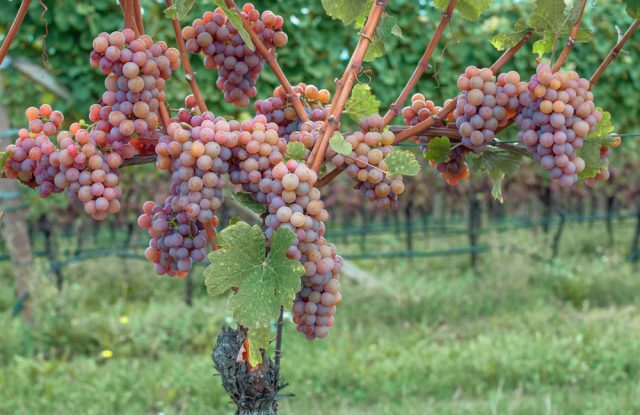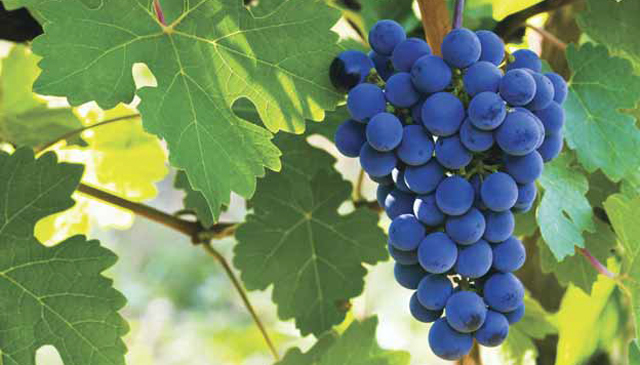Top 10 New Zealand grape varieties
Following the release of New Zealand Wine’s annual state of the nation report, db looks at the top grape varieties being produced in the country, and some of the best bottles available.
10. Malbec

95 hectares in 2023 from 127 in 2014.
Malbec has declined in New Zealand across the last decade, although there are still great, affordable examples, such as Leftfield’s Hawke’s Bay Malbec.
9. Gewürztraminer

192 in 2023 from 376 hectares in 2014.
Notable regions that produce this wine in New Zealand include Marlborough, Hawke’s Bay and Gisborne. ohanneshof Cellars produce an award-winning Gewürztraminer, this delivers aromas of spice and sandalwood, followed with hints of rosewater and a gentle sweetness. Whereas the Hawkes Bay winery Stonecroft produces a fuller-bodied Gewürztraminer with notes of stone fruit, sweet citrus and ginger spice.
8. Cabernet Sauvignon

204 in 2023 from 289 in 2014.
Another grape variety which has declined slightly is Cabernet Sauvignon. Hawke’s Bay provides the ideal conditions with great examples such as Mills Reef Elspeth Gimblett Gravels Cabernet Sauvignon.
7. Syrah

443 hectares from 433 in 2014.
Syrah is primarily planted on the North Island with the largest plantings in Hawke’s Bay and Auckland/Northland, including Waiheke Island.Syrah can date its origins in New Zealand back to the mid-1800s, and Craggy Range’s ‘Le Sol’ is a wonderful example of the variety.
6. Riesling

595 hectares from 784 in 2014
Mainly grown on the South Island, where the low humidity and long, dry autumn allow for ideal growing conditions, this grape variety has also decreased slightly in the past ten years. Great examples include Remarkable Wine’s Dry Riesling from Central Otago, which won a gold medal at the Global Riesling Masters 2022.
5. Merlot

Partner Content
1,061 from 1,290 hectares a decade ago
One of the world’s most popular grape varieties has declined slightly in the past decade.
4. Pinot Gris

2,797 from 2,451 hectares, ten years ago
A colour mutation of Pinot Noir, Pinot Gris is from Burgundy, and takes its name from the grape skins – which range from a grey-blue appearance to copper and light purple hues. In New Zealand, Central Otago is a popular location for the grape. In addition, a good example includes Marisco Vineyards Leefield Station Pinot Gris from Marlborough, which won a silver medal at the Global Pinot Gris Masters 2023.
3. Chardonnay

3,149 from 3,346 hectares in 2014
The third biggest of the grape varieties, and seeing a big jump in hectares from fourth place, there are a number of outstanding Chardonnays from New Zealand. This is a grape that can also be harvested early to yield a zesty wine with the grapefruit-like notes of Sauvignon Blanc, or the peach and apricot characters one might associate with Viognier.
Marlborough is a great location for the grape, with Stoneleigh’s Wild Valley Chardonnay from the area winning a gold medal at our Global Chardonnay Masters.
2. Pinot Noir

5,678 hectares from 5,509 in 2014
This popular but finickity grape has declined slightly across the last decade, but comes in a strong second in New Zealand’s grape varieties. Thin-skinned, tightly clustered, prone to disease, it’s hard to wonder why in the current climatic conditions around the world you would want to plant this grape, but the joy, of course, is in the glass. There is a lot of joy at a lower price point too, with Pinot Noirs from NZ in the sub-£20 being great examples, such as Marisco Vineyards’ The Ned Pinot Noir from Marlborough, which won a gold medal at the Global Pinot Noir Masters 2023.
1. Sauvignon Blanc

27,084 hectares from 20,029 a decade ago.
Say the word ‘Sauv Blanc’ and in the wine world this is often followed by someone saying ‘New Zealand’. Herbal, citrusy, grassy, sometimes smoky, it has been an absolute powerhouse of the NZ wine growing areas since the first grapes from France were planted in Marlborough in the 1970s. Now, it has grown into a global beast that shows no signs of letting up, with in the past ten years alone plantings grown by more than a third. It wins big at awards too, with multiple medal winners at the Global Sauvignon Blanc Masters, including Sileni Estates’s Straits Grand Reserve from Hawkes Bay, te Pa’s from Marlborough winning golds, and Marisco Vineyards’ Pride & Glory winning the coveted master award.
Related news
'Using helicopters would have crippled us financially'
Trinity Hill taps into rising demand for white wines in Asia




